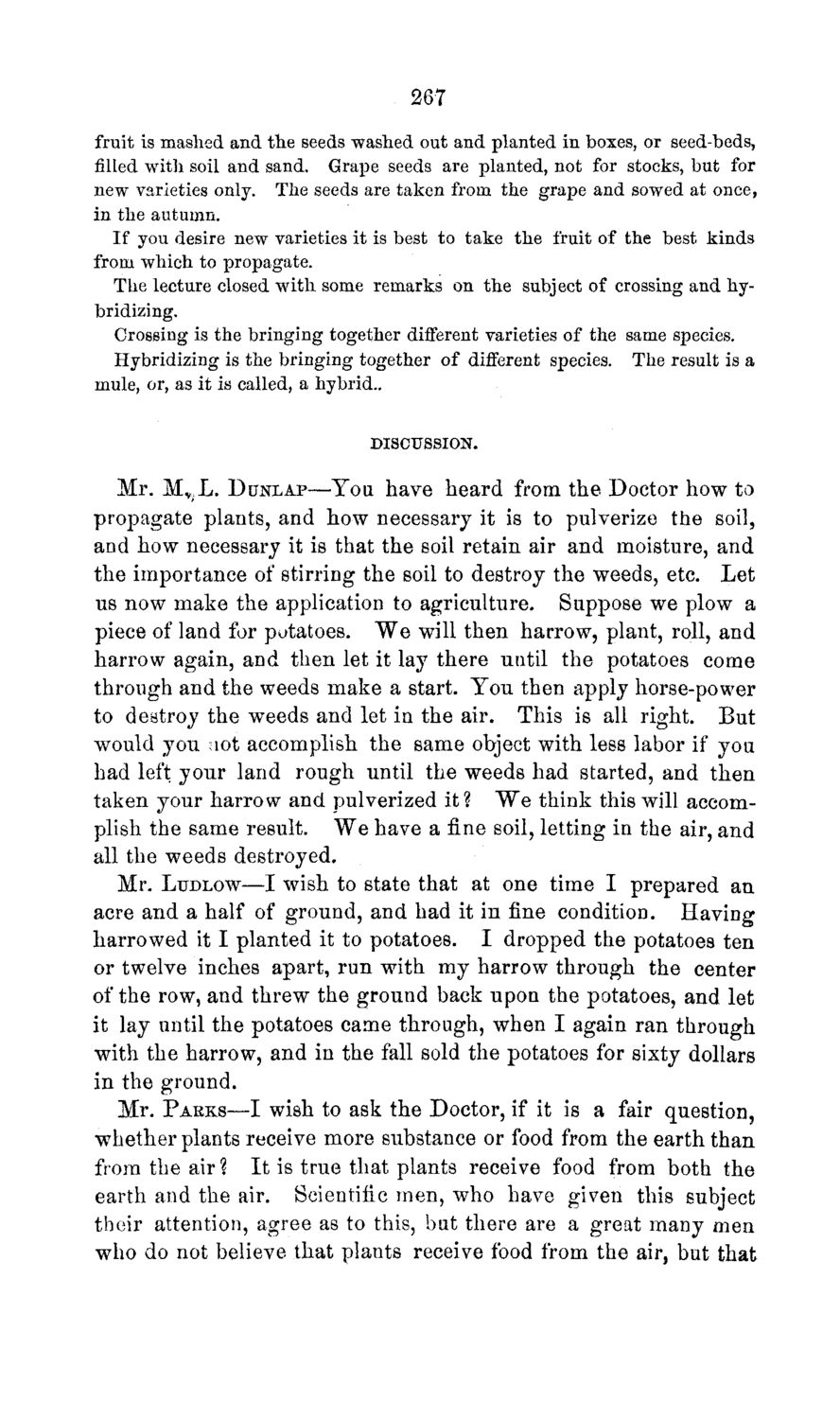| |
| |
Caption: Board of Trustees Minutes - 1869
This is a reduced-resolution page image for fast online browsing.

EXTRACTED TEXT FROM PAGE:
267 fruit is mashed and the seeds washed out and planted in boxes, or seed-beds, filled with soil and sand. Grape seeds are planted, not for stocks, but for new varieties only. The seeds are taken from the grape and sowed at once, in the autumn. If you desire new varieties it is best to take the fruit of the best kinds from which to propagate. The lecture closed with some remarks on the subject of crossing and hybridizing. Crossing is the bringing together different varieties of the same species. Hybridizing is the bringing together of different species. The result is a mule, or, as it is called, a hybrid.. DISCUSSION. Mr. M v L. DUNLAP—You have heard from the Doctor how to propagate plants, and how necessary it is to pulverize the soil, and how necessary it is that the soil retain air and moisture, and the importance of stirring the soil to destroy the weeds, etc. Let us now make the application to agriculture. Suppose we plow a piece of land for potatoes. We will then harrow, plant, roll, and harrow again, and then let it lay there until the potatoes come through and the weeds make a start. You then apply horse-power to destroy the weeds and let in the air. This is all right. But would you aot accomplish the same object with less labor if you had left your land rough until the weeds had started, and then taken your harrow and pulverized it? We think this will accomplish the same result. We have a fine soil, letting in the air, and all the weeds destroyed. Mr. LUDLOW—I wish to state that at one time I prepared an acre and a half of ground, and had it in fine condition. Having harrowed it I planted it to potatoes. I dropped the potatoes ten or twelve inches apart, run with my harrow through the center of the row, and threw the ground back upon the potatoes, and let it lay until the potatoes came through, when I again ran through with the harrow, and in the fall sold the potatoes for sixty dollars in the ground. Mr. PARKS—I wish to ask the Doctor, if it is a fair question, whether plants receive more substance or food from the earth than from the air ? It is true that plants receive food from both the earth and the air. Scientific men, who have given this subject their attention, agree as to this, but there are a great many men who do not believe that plants receive food from the air, but that
| |